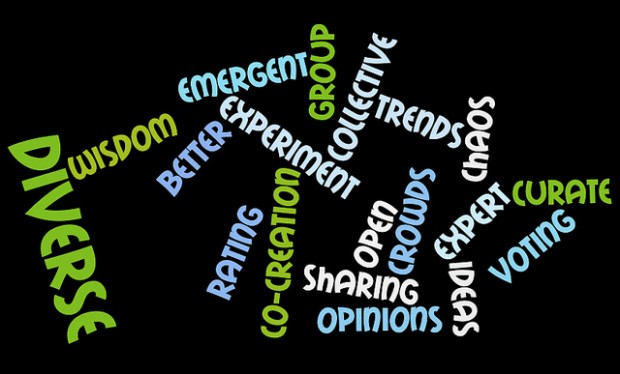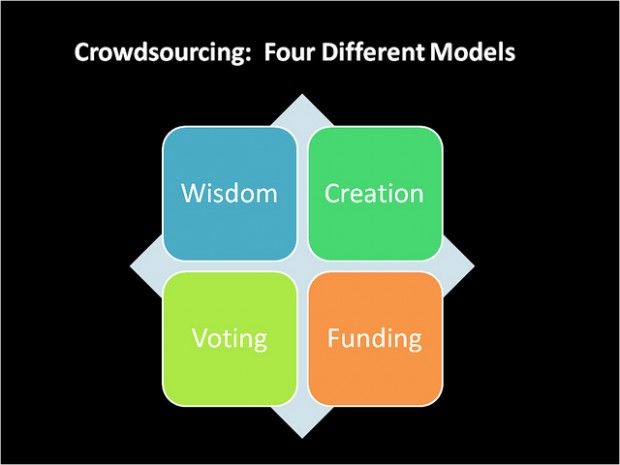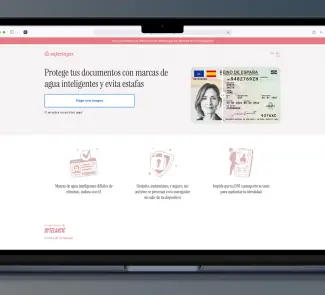The Internet has opened the door to a wide range of applications, services, training resources and platforms through which we can connect with other users and professionals from many disciplines. Thanks to the net, we can be much closer to those who are geographically far apart, pushing aside geographical issues and facilitating collaboration, participation and teleworking. Today, many companies have multidisciplinary work teams with members located in different cities and headquarters but who, thanks to the net, can work on a specific project and share knowledge as if they were sitting in the same office.
The net not only allows collaboration between a company’s work team members, but has also become the foundation on which many start-ups are built. Additionally, it is the meeting place for people with ideas, enthusiasm and, generally, people wanting to collaborate and work together under the umbrella of a common idea or a project whose human and financial capital may originate on the net.
Funding and Resources through the net? While collaboration is not something exclusive to the net, it is true that the Internet has provided us with powerful communication channels that facilitate contact with people who have ideas or concerns similar to ours and, of course, with other professionals with whom we can collaborate to develop projects or who can act as sources of funding for our ideas.

What is crowdsourcing?
Crowdsourcing is a form of collaboration that involves sharing or outsourcing certain tasks in a project to be carried out by a community of collaborators instead of what traditionally would be done through subcontracting or outsourcing to a company. One of the pillars of crowdsourcing is the net since, via the Internet, we can disseminate our projects, recruit partners and, of course, organize the resources and the work to be performed.
Although the term may sound like something very new, crowdsourcing has been going on for quite some time and, indeed, projects like Wikipedia or a number of free software projects are based on mass collaboration of professionals who mostly work voluntarily. With this acquisition of human capital, and even financing, projects can quickly move forward and achieve more and better results thanks to the collective effort. This also balances the work load better because every little effort adds up and, in the end, counts towards the final goal.
The term was coined by Jeff Howe and editor Mark Robinson in an article for Wired magazine back in 2006, to illustrate a phenomenon that began to emerge on the net and that was changing the rules of the traditional outsourcing of services, instead banking on collaboration on the net as the engine with which to build and develop projects.
This paradigm shift enables us to «recruit» talent thanks to the net and undertake software development projects, create designs collaboratively or even take part in the translation of content while learning, or simply, to feel fulfilled by using our free time to work on an idea that we like or identify with.
A good definition of crowdsourcing is the one given by Henk van Ess during a presentation in 2010, defining it as follows:
Crowdsourcing is channelling the desire of experts to solve a problem and then freely sharing the answer with everyone
Types of crowdsourcing
As in a conventional project, projects based on crowdsourcing also require a governance model with which to organize the team and ensure alignment with the goals and, of course, the quality of the products desired. If we look at how Wikipedia works, the site is open to collaboration but, above the collaborators (or Wikipedians), we find the more experienced editors who are responsible for reviewing the content and ensuring its quality. That is, although the projects are open to collaboration, governance models are followed that allow the resources and efforts to be optimized in addition to organizing the work well.

Within this collaborative work movement, depending on the scope of action or the problem that we want to solve by through others’ contributions, we find different collaboration models:
- Crowdfunding, that is, seeking funding through donations and contributions from third parties who, through affinity with our project, for personal satisfaction or a symbolic reward, decide to make a monetary contribution to fund the development, project or support an idea. Perhaps you find this kind of funding surprising, but platforms like Kickstarter have become important sources of funding for many projects, and serve as a springboard for advertising many business ideas.
- Crowdcreation is collaborative creation, that is, writing a book or conceptualise an idea through the contributions, however small they may be, of a community of users in a spirit of collaboration.
- Crowdvoting is something that we are actually quite familiar with, but we have never associated this term with mass voting in contests of ideas or surveys.
- Crowd wisdom or collective wisdom, is the effort made by a number of collaborators to generate knowledge and, say, nurture Wikipedia content or assist in the development of initiatives related to training and dissemination.
Opportunity or threat?
Although, at first glance, crowdsourcing can be seen as a kind of threat to businesses that offer services such as, outsourcing, it is actually an opportunity for businesses and professionals, enthusiasts and entrepreneurs because it is a fantastic tool for uniting, human capital, financial capital and creativity under one roof and, thanks to these three ingredients, developing projects that would otherwise demand considerable time, effort and resources.
Today, large companies facing complex challenges turn to crowdsourcing for ideas and possible solutions. It is a model of collaboration that gives preference to good ideas and may even reward them. In fact, we should not look on crowdsourcing as a source of cheap labour, but as a powerful tool with which to discover talent, promote projects or solve problems that we are unable to deal with using our own means and resources.
In addition to adding value to projects, in itself, crowdsourcing can be a business opportunity for companies that want to bring supply (challenges, projects, challenges to be overcome) to demand (professionals with ideas who are eager to contribute). In this sense, platforms like Innocentive or NineSigma have found a powerful niche in crowdsourcing and are taking it to large corporations and multinationals. Institutions like MIT, for example, turn to crowdsourcing to capture beta-testers for some of their developments, and services like Foursquare base much of their content offering on crowdsourcing, that is, on input from service users.
Recruiting collaborators
Learning or going deeper into a particular subject, contributing or gaining experience in projects, the search for recognition, sharing knowledge or feeling identified with a cause or an idea can be some of the reasons why someone might decide to collaborate on a project. Logically, to rope in collaborators, a project must be visible and have suitable resources to perform a public invitation or a call to action and collaboration.
In this sense, the Internet can provide us with a wide range of resources for spreading the word about our project, recruiting collaborators and building our project using online collaborative tools. To facilitate the recruitment of human and financial capital, there have been a number of initiatives that provide tools with which to connect our demand to the existing supply; that is, for finding collaborators or funding for our project.
In Spain alone, there are around 50 platforms that can help us in this quest for resources and, of these 50, about 30 are focused exclusively on searching for funding, that is to say, crowdfunding. Initiatives such as Goteo, Kifund, Inversore, Inverem or Yuujoo provide entrepreneurs a channel in which to seek funding and collaborators for the projects they are developing.
Projects that rely on crowdsourcing
Does crowdsourcing really work? Is it possible to develop projects based on the desire to work with people we do not know and with whom we communicate over the net? Whether for large projects or somewhat more modest ideas, crowdsourcing is a mechanism that can help launch a project and provide it with powerful resources, or indeed transform it into the pillar that supports our business.
DARPA, the United States Department of Defence research agency, has launched a «contest of ideas» to design a new amphibious vehicle for the Marine Corps. That is, it has turned to crowdsourcing so engineering enthusiasts can help them build a combat ship and thus give a breath of fresh air to this type of normally hermetic project, opening the door to new ideas and initiatives that will be incentivized with monetary prizes.
Endangered languages is an initiative from Google, which aims to catalogue and document the some 3,500 languages that are at risk of disappearing. On this site are stored video and sound recordings of the use of these languages, and, with the idea of preserving this cultural heritage and providing more resources to this bank of knowledge, the project is open to input from users.
Scientific research is also resorting to mass collaborations to optimize resources and shorten the time this type of work takes up. In the field of the study of the human brain, a team of 200 scientists from around the world from more than 100 research centres are working together to study the functioning of our brain and unite their efforts in search of a common goal.
Web services like Foursquare, TripAdvisor or IMDb are three examples of services that show recommendations written by other users, be they on hotels, restaurants, establishments or, in the case of IMDb, films. All of these recommendations, which are the services’ value, come from users and their eagerness to share views and knowledge. That is, it is also a way to apply crowdsourcing as a cornerstone in the operation of a service.
Crowdsourcing can reach even further than companies with large resources such as Google. Projects such as OpenStreetMap, which aim to create a free mapping system, are able to update their data and react faster than Google Maps to changes and updates with a powerful user community that supports the project and maps out their cities or corrects the data the service presents.
This new scenario proposed by crowdsourcing shows that collaboration and the sum of small efforts can manifest as a powerful engine with which to tackle projects and problems of great complexity and scale, optimizing resources, shortening development times and providing value both to customers and to project collaborators.
Images: Crowdsourcing Blog, Beth Kanter y Cobrasoft









